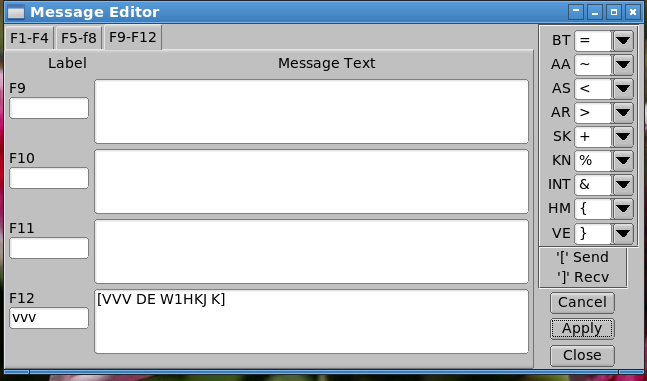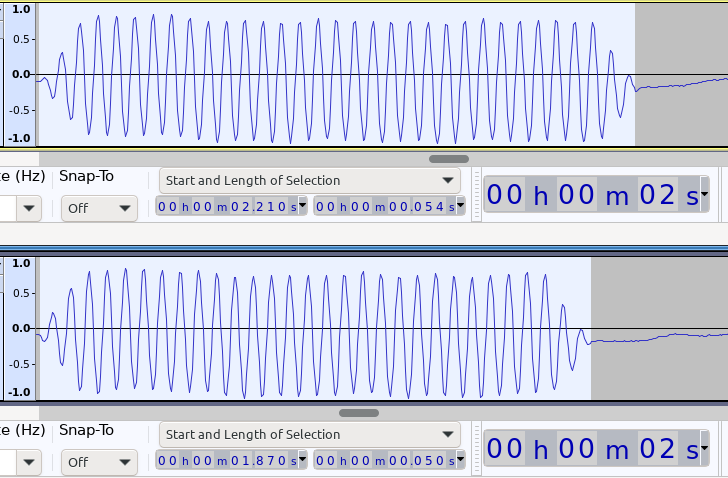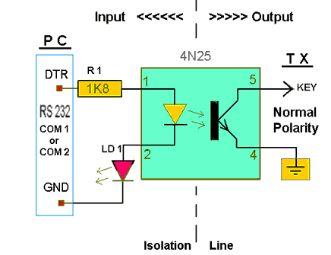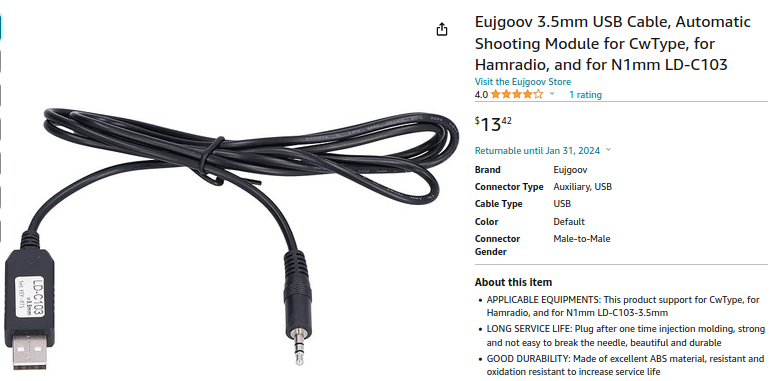 |
flrig_help
2.0.04
|
 |
flrig_help
2.0.04
|
Open the keyer dialog

with the main dialog menu item "Keyer/CW keyer".

Tip for the function / macro buttons:

Control-left-click opens:

A CQ macro with start/stop (ptt enable/disable):
[CQ CQ DE W1HKJ K]
Prosign characters can be configured by the user. The macros and prosign assignments are save in the transceiver prefs file.
Config opens:

The DTR/RTS port can be either
Select either DTR or RTS for the keyline as required by h/w.
Calibrate button sends standard "PARIS " word, WPM times. Program measures actual time to transmit and sets compensation value. WPM Comp msec can be adjusted by user.
Xcvr comp msec is used to increase or decrease each key down interval by the specified time interval.

The effect of a -2 msec Xcvr comp adjustment is clearly seen and easily heard.
It is especially important to correct weight errors introduced by the transceiver keying circuits when operating QRQ (high speed CW). At 80 wpm 2 msec is a significant part of the target dit interval of 15 msec.
PTT delay is in milliseconds. Enter a non-zero value to enable a delay between the PTT-on and the first CW keyline closure. The same delay will be applied to the last CW keyline closure and PTT-off.
The CW keyer is specifically designed to work with a DTR/RTS keyline to emulate the closure of a CW key. Several transceivers have this capability built in to the hardware. Some expose a separate keying port (FT-991A) and some share the CAT serial port (IC-7300). A simple DTR/RTS keying circuit can also provide the h/w interface. This one provides galvanic isolation:

Inexpensive USB serial-to-CW-keyline devices are available from internet vendors. This is one sold by by Amazon.com and WalMart.com.
